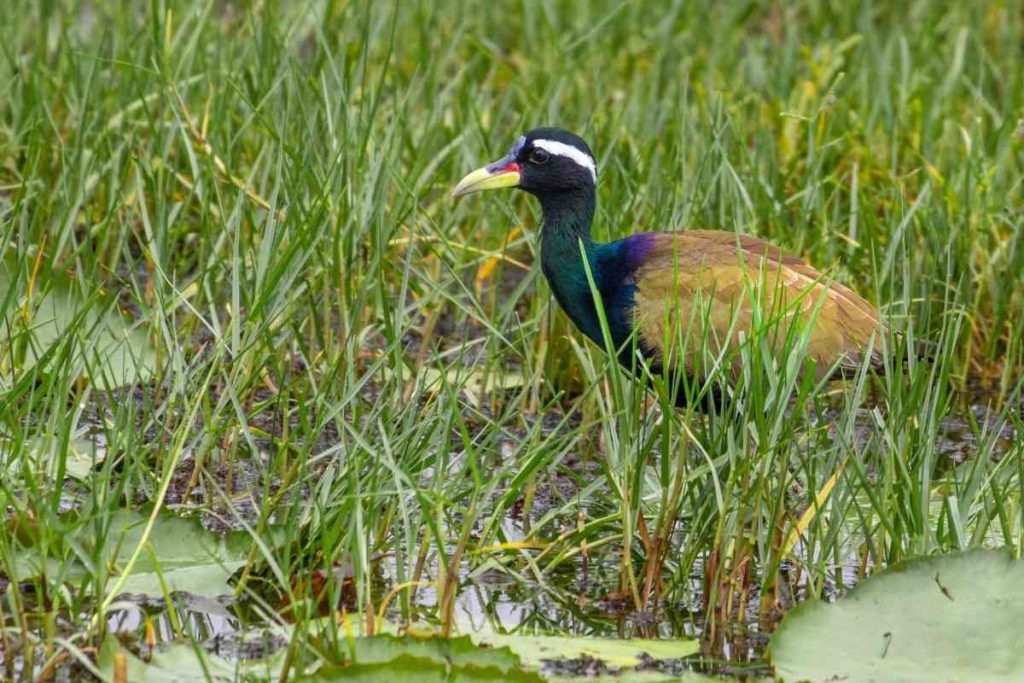The bronze-winged jacana, found in South and Southeast Asia, is a wader with long legs for balancing on floating vegetation. Females are larger and maintain harems, while males incubate eggs and care for the young. They eat insects, invertebrates, and plants, and their eggs are often preyed upon.
The bronze-winged jacana is the only species in the genus Metopidius and distributes throughout South and Southeast Asia. It uses its long feet and legs for balance while foraging on lilies and other floating aquatic vegetation, like other jacanas. Although the sexes appear similar, females are slightly larger and have more sexual partners, allowing them to maintain a harem of males during the monsoon rainy season. One male in the harem incubates the eggs and cares for the young, while males defend territories. The male may carry the young chicks under his wings to safety when they are in danger. Bronze-winged jacanas forage on water vegetation, either alone or in pairs.

Quiet Observer A vigilant jacana surveys its surroundings.
They also gather these items off the water’s surface or floating plants. Usually given in panic, the call is a wheezy piping seek-seek-seek. They occasionally submerge themselves to hide when threatened. The breeding season (June to September in India, however sporadic breeding in March rains reported in Rajasthan begins after the rains. Males use open-winged and neck-stretched displays, which can escalate to pecking, to protect their territories from rival males. The peak hours for territory maintenance operations are from 9 to 11 AM. Females can lay eggs directly on lotus leaves, but the nest forms a small platform made of Pistia, Nymphoides, Hydrilla, and Eichhornia stems and leaves, set on a mat of vegetation.

Elegant pairing In the wetlands, jacanas bond through mating.
A typical clutch contains four conical, shiny brown eggs with irregular black zigzags. Males incubate and care for the young, which hatch after 29 days. Predators, like birds and turtles, often prey on eggs, with up to 94% lost. Males shelter chicks between their wings for protection. By ten weeks, chicks become independent of their father. Female bronze-winged jacanas are larger, territorial, and polyandrous, competing for male harems to incubate eggs. Each female’s territory includes one to four males. The degree of polyandry depends on male territory size and number of males. Heavier males defend their territories, while sperm rivalry leads to males killing eggs with uncertain paternity.

Careful pace Every step is measured, cautious and deliberate.
Several “floater” men may try to copulate with females in addition to the territorial males. In addition to copulating with non-receivers to keep their harem intact, females may copulate more frequently with receiver males to guarantee clutch survival.Losing males from her harem has a far lower fitness cost than receivers destroying clutches. To attract the attention of ladies, males yell. In larger harems, males yell more. Females copulate with males that yell more, suggesting that they use yells to judge a man’s quality
Copyrights : All the photos and texts in this post are the copyright of John Thomas and Creative Hut Institute of Photography and Film. Their reproduction, full or part, is forbidden without the explicit approval of the right owners.


